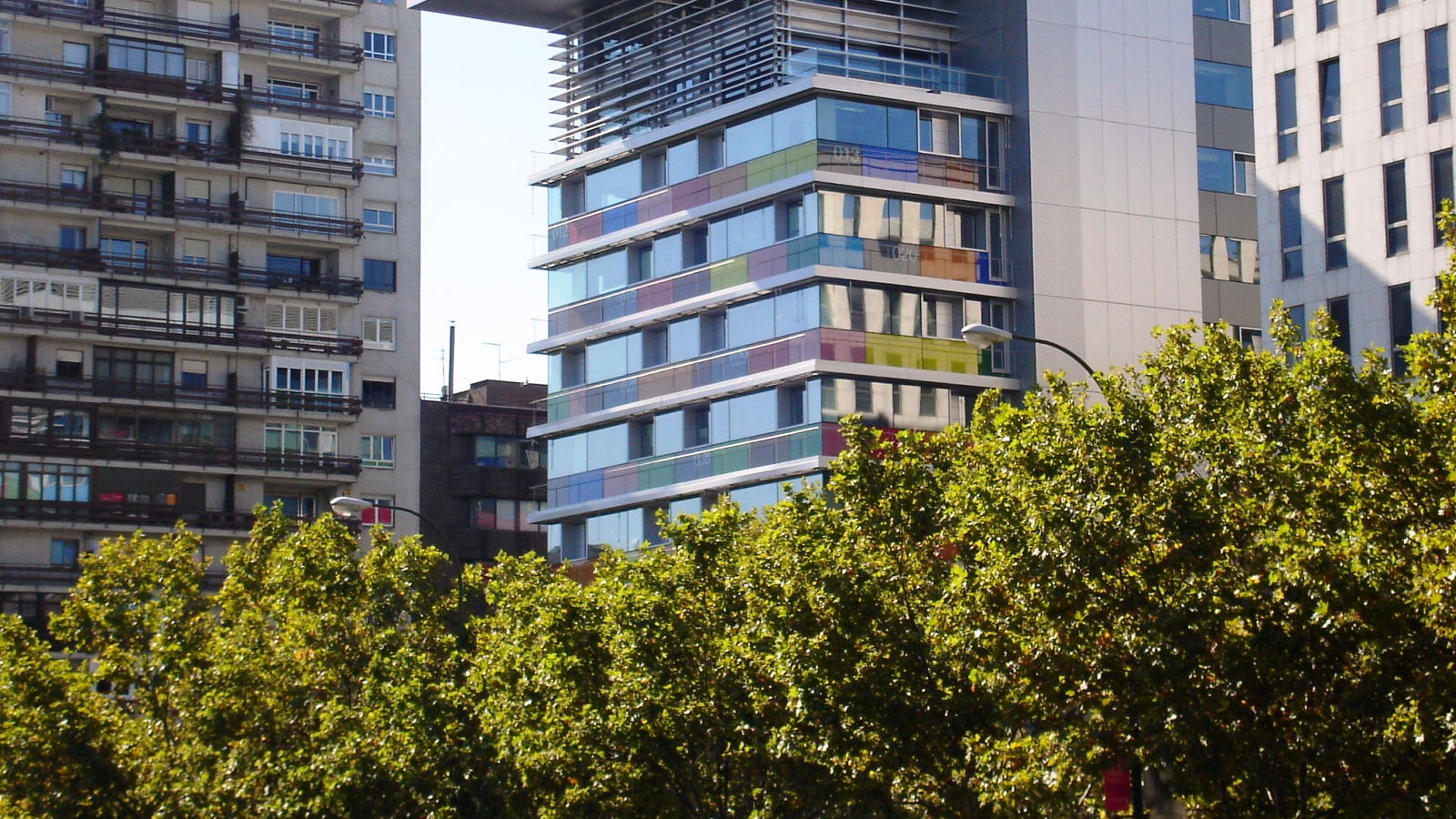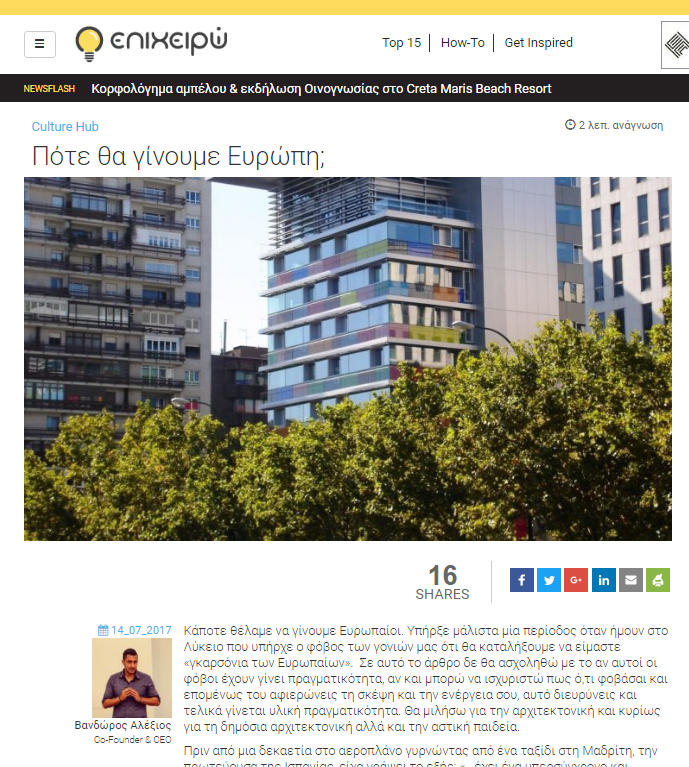We once wanted to be European. There was even a period when I was in high school when our parents were afraid that we would end up being "waiters of the Europeans". In this article I will not deal with whether these fears have come true, although I can assert that whatever you fear and therefore devote your thought and energy to, you expand and eventually become a material reality. I will talk about architecture and mainly about public architecture but also urban education.
A decade ago on the plane back from a trip to Madrid, the capital of Spain, I wrote the following: “…it has a state-of-the-art and vast public transport network. Its metro is one of the largest in the world, covering even the most remote areas, while at the same time it is the city with the largest percentage of greenery in all of Europe.
A walk in the city is enough to understand no one knows how important the presence of greenery is to the psyche of every citizen, either in the form of simple stands of trees or small parks. As in all European cities, in Madrid the highways are wide, the distances between buildings at least 1:1 in relation to the road and the existence of large parks is self-evident. One could invoke the well-known counterargument, that Greece as a country did not experience the European development from the Middle Ages to the industrial age, therefore it does not have historical centers with squares, parks and emblematic buildings. On the other hand, even if we accept the building orgasm of the 1920s (for housing refugees) and 1950-60s, modern Greece had many opportunities to build in a different way. Even today, when an area is included in the city plan, it is first built with a rudimentary urban design and then networks and roads are opened, which are usually insufficient without taking into account the parking of the cars that will flood the area.
Thessaloniki, like the rest of the Greek cities, does not have a single properly located and adequately sized park. In this country, which has a climate ideal for outdoor activities, we are unable to provide the citizens with a humane environment. Instead of changing sidewalks and railings, it would be better to create common spaces.
In European cities too, there are no street waste bins. Each apartment building has a special area on the ground floor where the waste is collected and taken out at night. This simple method combined with the even and friendly urban equipment and the harmony between built (full) and unbuilt (empty), turns pedestrian traffic in the city into a pleasant and humane process.
A country with so many natural assets must get the cities they deserve. Until the mentality of the ordinary citizen changes, there must be agencies and local governments, which, in addition to the respective governments, draw up a long-term national strategy and local urban policies with a people-centered character. »
In the years that have passed, some large institutions have been found that have taken on the role of sponsors, creating urban interventions in this direction. But there are also private initiatives of citizens who, instead of sitting in front of the garbage can and living the lives of others, took personal responsibility and created little paradises in their neighborhood. Everyone can take charge of life and take care of themselves, fellow human beings, his neighborhood and his city and in this way let's all together create the cities we deserve!
Alexios Vandoros
…………….
The article was published on Epixeiro.gr > www.epixeiro.gr/article/56831




